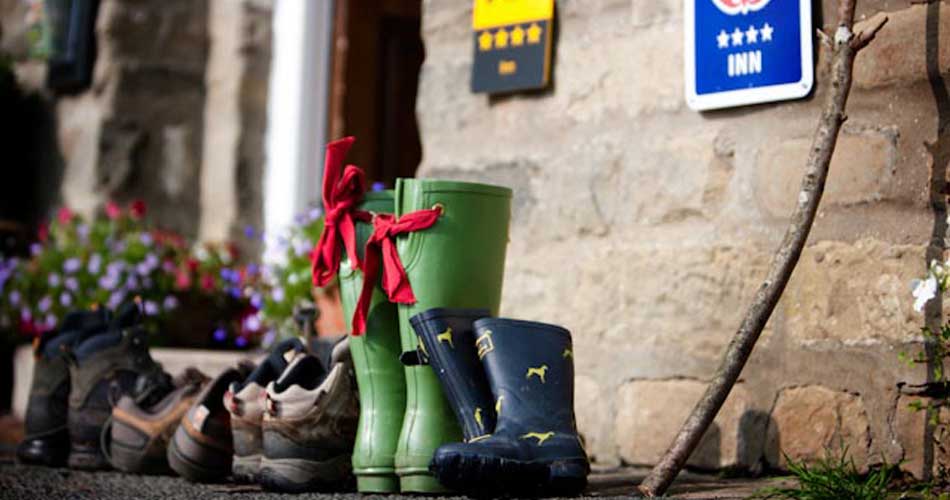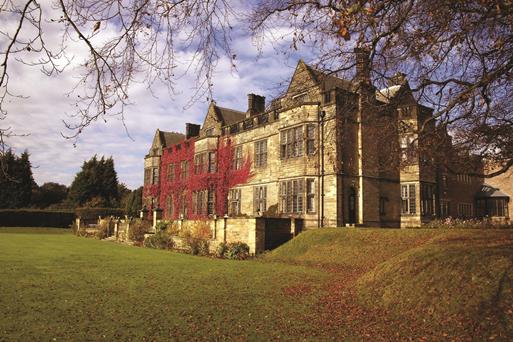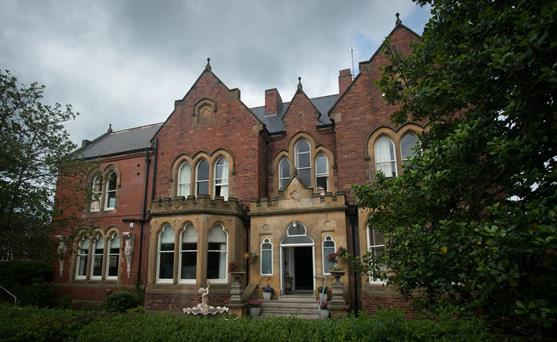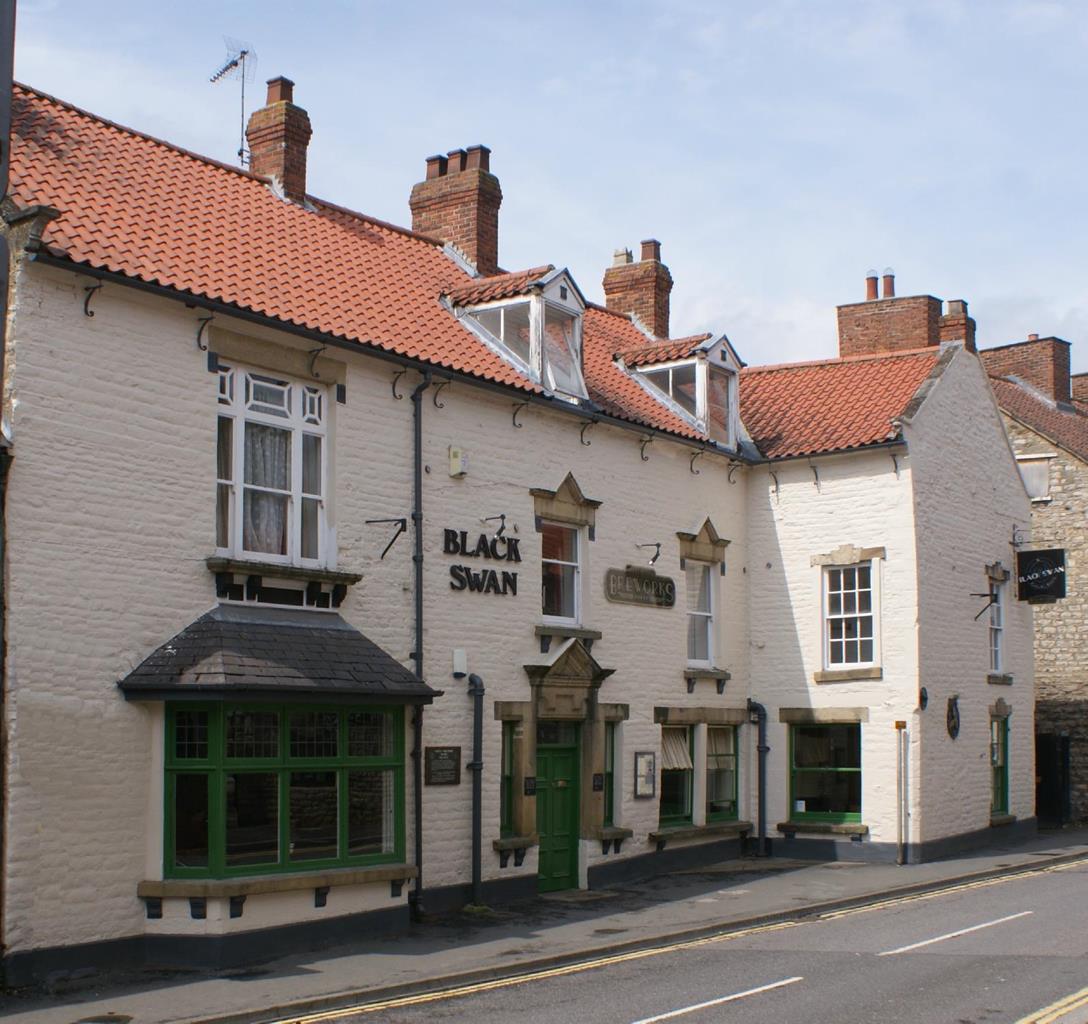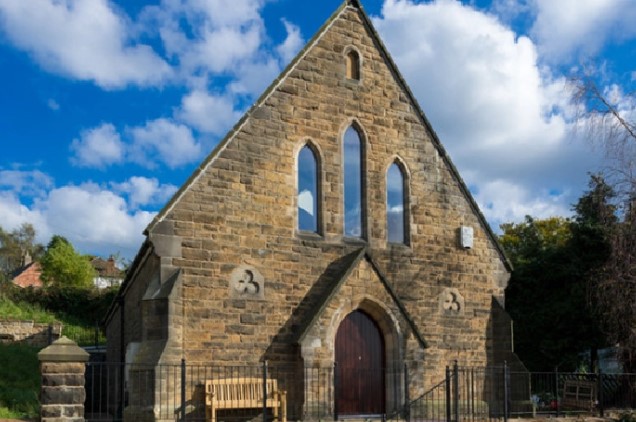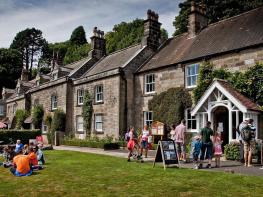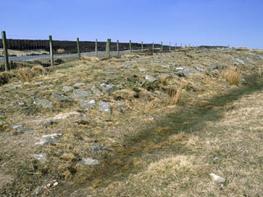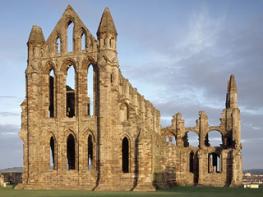Blinkbonny is in an elevated position, with lovely views over hills and woodland. Inside, the…
On ancient tracks above Glaisdale

Historic tracks lead on to wide, open moors and deep, lush woods.
3.5 miles (5.7kms)
About the walk
There’s a clue before you even start the walk that at least part of it will be on an ancient route. Right by the parking area is a lovely old arched stone bridge over the Esk, known as Beggar’s Bridge. Its low parapets suggest that it was regularly used by laden packhorses. The date 1619 and initials T F are carved on the east side of the bridge; these are thought to commemorate Alderman Thomas Ferries (or Ferris) of Hull. One version of the story states that as a young man in the neighbourhood he fell in the river and almost drowned while crossing stepping-stones nearby. In thanks for his lucky escape, he vowed that if he ever became wealthy enough he would build a bridge here. An alternative version tells that Ferries fell in love with the daughter of a local squire, and decided to seek his fortune at sea so that he could marry her. On the night before leaving, the river was high and he was unable to pay a last visit to his intended. Again the story tells that he vowed to build a bridge. This version would more clearly explain why the bridge is called Beggar’s Bridge. Both versions agree that Ferries did eventually make a fair fortune at sea, and eventually returned to keep his word (and marry the squire’s daughter). However, it is likely that there was already the remains of a bridge on the spot, and that Ferries actually funded its restoration.
Immediately after the start, the walk crosses Glaisdale Beck, just above its confluence with the Esk, and then climbs steadily on to a ridge which later gives views of the dale itself. It’s a short, curving valley notable for its ancient pattern of small, narrow fields. The field pattern looks almost medieval, but Glaisdale village is largely 19th-century. Mining and quarrying have been carried on here for centuries; one legacy of this is the name Delves (Point 6), meaning ‘pits’. The Ordnance Survey map marks ‘iron workings’ near the track early in the walk, and in aerial photographs a large number of pits can be seen, though they are less obvious from ground level.
Tracks such as the one through East Arnecliff Wood, used in the final stage of the walk, developed to transport stone, iron ore and agricultural produce. In this steep terrain carts were troublesome, and pack animals – horses and mules – were used instead. Loads would be carried in panniers, with weight equally distributed either side of the animal. Low parapets, like those on Beggar’s Bridge, were equipped to allow clearance for such loads. In East Arnecliff Wood, a continuous single line of stones known as a pannier-way runs along much of the length of the track.
Pannier-ways are fairly common in the area, and developed mostly from the late 16th century onward. They were constructed wherever the ground might be soft, to ensure safe passage for strings of packhorses.
Mining developed on a larger scale after the opening of the railway (now called the Esk Valley Line) in 1865; this linked at Grosmont with the Whitby–Pickering line. There were mines at Grosmont and Glaisdale, and three blast furnaces were built at Glaisdale by 1869. They failed to compete effectively with larger-scale developments, notably on Teesside, and the works closed within a few years.
Walk directions
Walk under the railway. Where the road bends right there’s a ford. If dry go across, otherwise use the footbridge. Go ahead up the track. It soon starts to climb steeply, but this eventually eases.
Continue up the rutted track, flanked by well-built walls and trees before open views begin to appear. At Snowdon Nab the track turns to tarmac, though still with a strip of grass down the middle. Keep following it, until it bends left to meet a lane.
Turn right up a steepish climb. After the gradient eases out, look for a footpath sign by a gate on the left. Follow a green path straight ahead down the moor; if the weather’s clear, the Fylingdales ‘pyramid’ on the skyline is a point to aim for. Descend to a gate in the angle of two walls.
Go through and follow the field edge on the left before turning directly downhill, following the groove of an old track. Turn left in a narrow strip of field towards a house (Lodge Hill).
Go through a gate and continue past the house and various crumbling farm buildings, then follow the access track, which bends left and then right. Continue through another farmyard (Butter Park), following the waymark and keep right at a fork to descend to a road opposite a thatched cottage in the hamlet of Delves.
Turn right down the road and descend steeply through some tight bends, with a great view of Eskdale.
Just below the steepest section turn left on a track signed ‘Bridleway Glaisdale’ and follow it through the woods. Eventually it dips to run near the river, then makes a final climb through a gap. Turn right down steps to the footbridge to complete the walk.
Additional information
Good stony tracks, a quiet lane and a short moorland descent
River valley, sheltered woodland and open moor
Lead required for road walking sections
OS Explorer OL27 North York Moors, Eastern Area
By railway arches just east of Glaisdale Station (on the Esk Valley line)
None on route
WALKING IN SAFETY
Read our tips to look after yourself and the environment when following this walk.
Find out more
Also in the area
About the area
Discover North Yorkshire
North Yorkshire, with its two National Parks and two designated Areas of Outstanding Natural Beauty, is England’s largest county and one of the most rural. This is prime walking country, from the heather-clad heights of the North York Moors to the limestone country that is so typical of the Yorkshire Dales – a place of contrasts and discoveries, of history and legend.
The coastline offers its own treasures, from the fishing villages of Staithes and Robin Hood Bay to Scarborough, one time Regency spa and Victorian bathing resort. In the 1890s, the quaint but bustling town of Whitby provided inspiration for Bram Stoker, who set much of his novel, Dracula, in the town. Wizarding enthusiasts head to the village of Goathland, which is the setting for the Hogwarts Express stop at Hogsmeade station in the Harry Potter films.
York is a city of immense historical significance. It was capital of the British province under the Romans in AD 71, a Viking settlement in the 10th century, and in the Middle Ages its prosperity depended on the wool trade. Its city walls date from the 14th century and are among the finest in Europe. However, the gothic Minster, built between 1220 and 1470, is York’s crowning glory.
Nearby stays
Restaurants and Pubs
Nearby experiences
Recommended things to do
Why choose Rated Trips?
Your trusted guide to rated places across the UK
The best coverage
Discover more than 15,000 professionally rated places to stay, eat and visit from across the UK and Ireland.
Quality assured
Choose a place to stay safe in the knowledge that it has been expertly assessed by trained assessors.
Plan your next trip
Search by location or the type of place you're visiting to find your next ideal holiday experience.
Travel inspiration
Read our articles, city guides and recommended things to do for inspiration. We're here to help you explore the UK.


